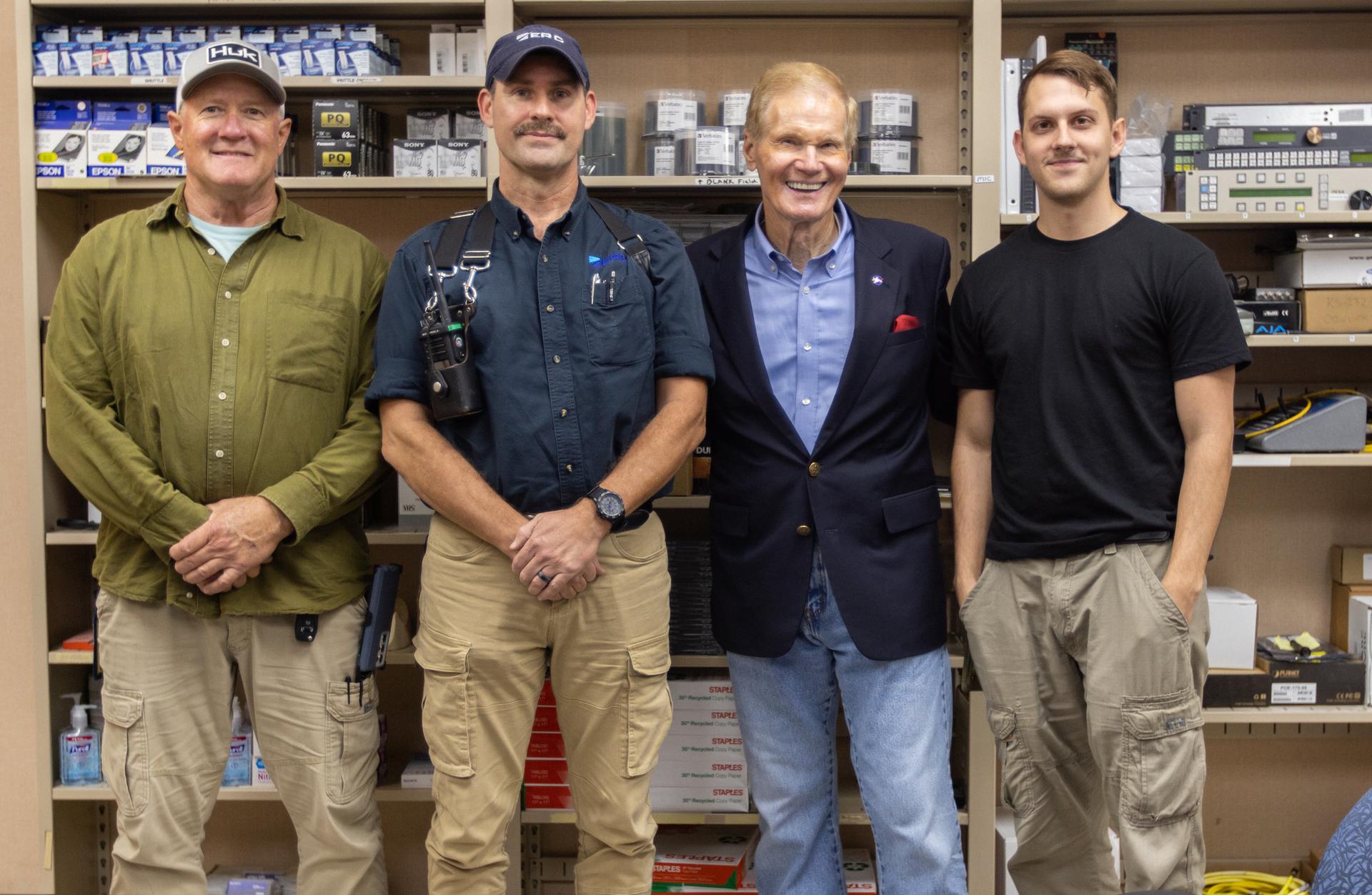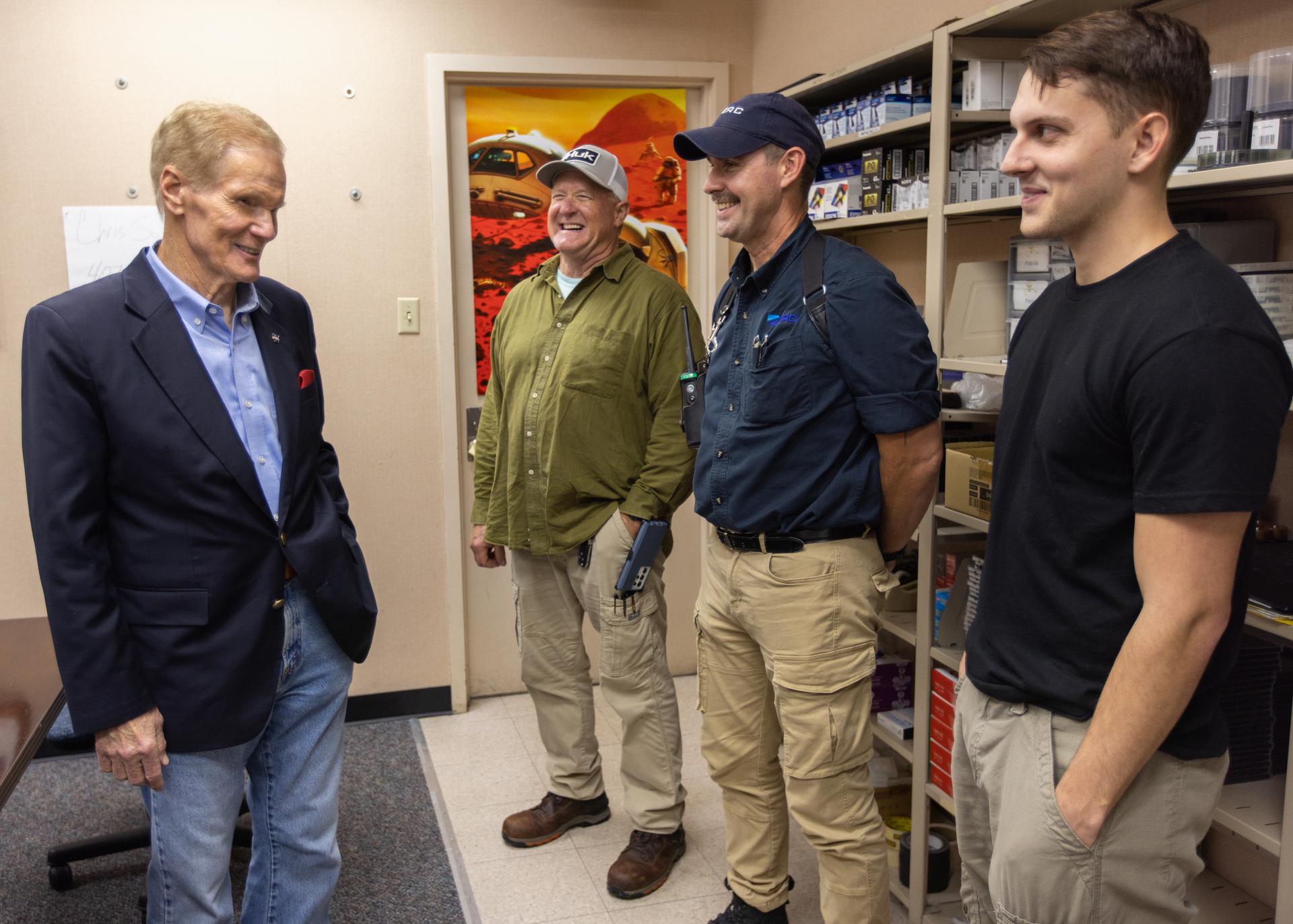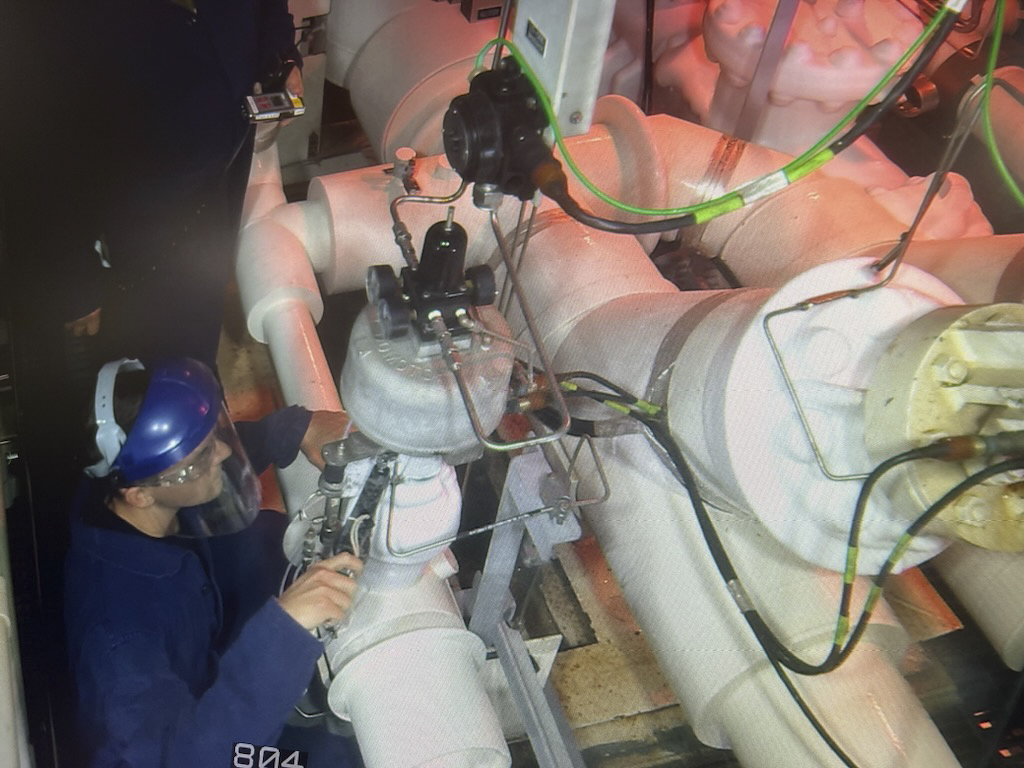
By Antonia Jaramillo
NASA’s Kennedy Space Center
As NASA’s Orion spacecraft continues its journey to the Moon during the Artemis I mission, the successful launch on Nov. 16, 2022, from Launch Pad 39B at the agency’s Kennedy Space Center in Florida might not have occurred that day had it not been for three brave individuals. A team known as a “red crew” went to the pad once propellants had already started flowing into the Space Launch System rocket to help resolve a hydrogen leak.
While loading liquid cryogenic propellants into the world’s most powerful rocket, teams encountered a small leak on a hydrogen valve inside the mobile launcher. Although engineers attempted to remotely troubleshoot the issue from the Launch Control Center, which is safely four miles away from the launch pad, managers ultimately decided a red crew needed to be sent to the pad to resolve the problem.
The term “red crew” refers to a team of 40 to 50 personnel who are on standby through the launch countdown to address issues requiring hands-on attention that may arise. The red team includes personnel with 17 different skillsets who are specially trained to address a range of technical, engineering, facilities, safety, or logistics issues at the pad.
During the Nov. 16 launch attempt, safety engineer Chad Garrett and cryogenic engineering technicians Billy Cairns and Trent Annis made the trip to the launch pad, entering the mobile launcher at its zero deck, or base, with Annis tightening bolts at the leaky valve while Cairns communicated with the launch team.
“Hours before our Artemis I mission began, Billy Cairns, Chad Garrett, and Trent Annis showed why NASA is only as good as its world-class workforce, and our agency is fortunate that we have the best of the best,” said Administrator Bill Nelson. “This ‘red crew’ not only demonstrated heroism and professionalism that helped launch our mission safely, but they also reminded us how critical each team member is to every NASA mission.”
The three are employees of ERC, a company that partners with Jacobs, which is the prime contractor on NASA’s Test and Operations Support Contract. Jacobs supports NASA’s Explorations Ground Systems program during the rocket’s final assembly, integration, testing, launch, and recovery operations support.
“Our team has various disciplines that are all on hand in case there’s a problem during the launch attempt so we can go to the pad safely and resolve the problem. Or if there’s a scrub, we will go and safe the systems and the rocket so we can begin the de-tanking process,” said Garrett.
A fourth person, Jacobs engineer Bryce Yarbrough, who was stationed in the firing room of the Launch Control Center, was also a critical part of the red crew effort, communicating with the team and guiding them through the procedure to fix the hydrogen leak at the pad.
“I’ve worked with Billy my entire time here at Kennedy,” Yarbrough said. “As soon as I heard that Billy was going out, I was calm and had a lot of confidence in our plan. I trust Billy and the team completely.”
As Garrett, Cairns, and Annis headed to the pad, Annis recalls all the emotions that ran through him that night.
“As we’re going up to the pad surface, I was talking to Billy about how exciting this was and he was telling me it was his first time out there as well, so I asked, ‘Are you nervous? Because I am,’” Annis recounted, as he also remembers thinking this rocket, which has always seemed stationary and silent to him prior, had now come alive. “And Billy said, ‘Yeah, I am. It’s totally normal to feel nervous.’”

Cairns has been part of the red crew for nearly 38 years, working through the Space Shuttle Program and now on Artemis. Annis joined in November 2020, while Garrett came aboard about a year ago. Although this was the team’s first time entering the pad during launch operations, the full team completed comprehensive training as part of preparations for the role. Throughout NASA’s launch programs, the agency has historically sent teams to the pad to conduct inspections during active launch operations as needed. Such was the case during the iconic Apollo 11 launch, which sent the first astronauts to the Moon, when teams also encountered a hydrogen leak during countdown operations.
It wasn’t until the three red crew team members left the pad and got back to their station that they learned the leak was fixed and launch countdown operations had resumed.
“There could have still been other problems that the red crew would have to go back in for,” Garrett recalled thinking after returning back from the pad. “But after launch, we were very pleased and relieved. We were just doing our job, and it wasn’t until we got back to the red crew staging area that our co-workers said, ‘You saved the launch.’”
While the red crew’s job might be done for Artemis I, teams will be ready for Artemis II, the first Artemis mission to carry astronauts, and for future Artemis missions that will land the first woman and first person of color on the lunar surface and build a long-term presence at the Moon.



























